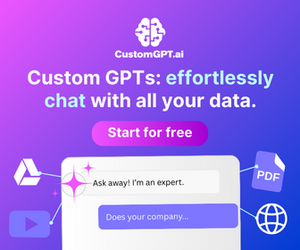-
Table of Contents
Common AI Myths Debunked

Common AI myths debunked: Artificial Intelligence (AI) has become a buzzword in recent years, but it’s often misunderstood. Many people struggle to separate fact from fiction, leading to unnecessary fear or overhyped expectations. This article aims to clarify the truth behind some of the most persistent misconceptions about AI. By the end, you’ll have a clearer understanding of what AI can and cannot do, empowering you to make informed decisions about its role in your life or business.
Table of Contents
- Myth 1: AI Will Replace All Human Jobs
- Myth 2: AI Is Infallible and Always Accurate
- Myth 3: AI Can Think and Feel Like Humans
- Myth 4: AI Is Only for Tech Giants
- Myth 5: AI Is a Black Box That Can’t Be Understood
- Myth 6: AI Will Soon Surpass Human Intelligence
- Myth 7: AI Is Always Expensive and Complex to Implement
- Conclusion: Separating Fact from Fiction
Myth 1: AI Will Replace All Human Jobs
One of the most pervasive myths about AI is that it will render human workers obsolete. While it’s true that AI can automate repetitive tasks, it’s unlikely to replace jobs entirely. Instead, AI often complements human skills, allowing workers to focus on more creative and strategic tasks. For example, in healthcare, AI can analyze medical images, but doctors still make the final diagnosis and treatment decisions.
According to a McKinsey report, only about 5% of jobs can be fully automated. The rest will require human oversight or collaboration with AI tools. Moreover, AI is creating new job opportunities in fields like data science, AI ethics, and machine learning engineering. Rather than fearing job loss, we should focus on upskilling to adapt to the changing landscape.
Why AI Complements Rather Than Replaces
AI excels at processing large amounts of data and identifying patterns, but it lacks the emotional intelligence and creativity that humans bring to the table. For instance, while AI can write basic news articles, it can’t craft compelling narratives or understand cultural nuances. This synergy between humans and AI is what drives innovation and efficiency in various industries.
Myth 2: AI Is Infallible and Always Accurate
Another common misconception is that AI systems are flawless. In reality, AI is only as good as the data it’s trained on. Biased or incomplete data can lead to inaccurate or unfair outcomes. For example, facial recognition systems have been criticized for higher error rates when identifying people of color, as highlighted in a New York Times article.
Moreover, AI models can make mistakes in unpredictable ways. A self-driving car might misinterpret a stop sign if it’s partially obscured. To mitigate these risks, continuous monitoring and human oversight are essential. Understanding the limitations of AI helps us use it responsibly and avoid over-reliance.
The Importance of Data Quality
High-quality, diverse data is the foundation of effective AI systems. Without it, even the most advanced algorithms can produce unreliable results. Companies must invest in robust data collection and preprocessing methods to ensure their AI tools perform as intended.
Myth 3: AI Can Think and Feel Like Humans
Despite advancements in AI, it’s far from achieving human-like consciousness. AI systems operate based on algorithms and data, not emotions or self-awareness. For example, chatbots like ChatGPT can simulate conversations but don’t truly understand the context or emotions behind the words.
This myth often stems from science fiction portrayals of AI as sentient beings. In reality, AI is a tool designed to perform specific tasks efficiently. While it can mimic certain aspects of human behavior, it lacks the depth and complexity of human thought.
Why AI Isn’t Sentient
AI systems follow predefined rules and patterns, making them fundamentally different from human cognition. They don’t experience emotions, make moral judgments, or possess self-awareness. Recognizing this distinction helps us set realistic expectations for AI’s capabilities.
Myth 4: AI Is Only for Tech Giants
Many people believe that AI is exclusive to large corporations like Google or Amazon. However, AI tools are becoming increasingly accessible to businesses of all sizes. Platforms like TensorFlow and IBM Watson offer affordable solutions for small and medium enterprises.
For instance, a local retailer can use AI to analyze customer behavior and optimize inventory management. Similarly, a small marketing agency might leverage AI-powered tools to personalize campaigns. The democratization of AI is leveling the playing field, enabling businesses to compete more effectively.
How Small Businesses Can Leverage AI
By adopting AI, small businesses can streamline operations, enhance customer experiences, and gain valuable insights. The key is to start small, focusing on specific use cases that deliver tangible benefits. Over time, these incremental improvements can lead to significant growth.
Myth 5: AI Is a Black Box That Can’t Be Understood
Some people view AI as an incomprehensible technology shrouded in mystery. While certain AI models, like deep neural networks, can be complex, efforts are being made to improve transparency. Techniques such as explainable AI (XAI) aim to make AI decisions more interpretable.
For example, in healthcare, XAI can help doctors understand why an AI system recommended a particular treatment. This transparency builds trust and ensures that AI is used ethically. By demystifying AI, we can foster greater adoption and collaboration.
The Role of Explainable AI
Explainable AI provides insights into how algorithms arrive at their conclusions. This is crucial for industries where accountability and trust are paramount. As AI becomes more transparent, users can make informed decisions and



Leave a Reply